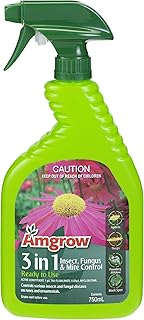The U.S. Environmental Protection Agency (EPA) has implemented a Herbicide Strategy aimed at safeguarding endangered species and habitats from potential herbicide impacts. This strategy dictates specific mitigation measures for spray drift and runoff/erosion based on pesticide properties and use directions. To address off-target movement, EPA introduced a mitigation point system tied to pesticide vulnerability. All herbicide products will undergo assessment under this strategy, determining their mitigation point requirements.
Upon assessment, pesticide products typically receive between three to nine runoff mitigation points, indicating their vulnerability levels. For instance, Liberty® ULTRA Herbicide requires three points, denoting low runoff susceptibility. Illinois soybean growers can acquire up to nine points by following prescribed methods, underscoring the importance of adherence to mitigation requirements.
EPA has developed a “reduced runoff vulnerability map” categorizing counties based on their vulnerability levels, offering corresponding mitigation points. These points are automatically allocated to agricultural fields within each county, with additional points available for growers demonstrating mitigation compliance. By leveraging field characteristics, cropping practices, and participation in conservation programs, growers can accrue extra points towards meeting mitigation requirements.
A recommended process has been outlined for growers to identify and accumulate available field points. By referencing the county map, growers can ascertain their county’s vulnerability classification and proceed to tally points for various categories. This process needs to be conducted on a field-specific basis, ensuring accurate documentation and compliance with mitigation measures.
Field assessments should be thorough, with existing mitigation points accounted for before considering new practices to bolster points. In cases where the required points are not met, EPA’s mitigation option picklist serves as a resource to explore additional mitigation strategies. For further guidance on obtaining mitigation points, Illinois Soybean Association can be contacted for assistance.
Online resources provided by EPA offer valuable tools for growers, including the Mitigation Menu, Mitigation Calculator, and USDA Web Soil Survey. These resources aid growers in navigating mitigation requirements and optimizing their mitigation strategies for sustainable herbicide use.
As the agricultural industry continues to prioritize environmental conservation and sustainable practices, the EPA’s Herbicide Strategy plays a vital role in ensuring the responsible use of herbicides while safeguarding endangered species and habitats. By following the outlined guidelines and leveraging available resources, soybean growers in Illinois can effectively meet runoff mitigation point requirements and contribute to environmental protection efforts.
📰 Related Articles
- Wolff’s Flea Market: Illinois’ Premier Treasure-Hunting Destination
- Windale Hub Council Meeting to Address Climate Resilience and Family Strategy
- WWF Canada Launches Endangered Pieces Puzzles to Highlight Biodiversity
- Victoria’s Secret Appoints New CEO to Revamp Brand Strategy
- Unlocking Value: The Strategy Behind Line Betting in Sports

